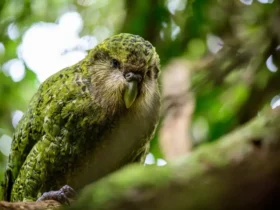When it comes to avian beauty, few birds rival the elegance and allure of the mountain bluebird (Sialia currucoides). With its striking azure plumage and cheerful demeanor, this North American native captivates the hearts of birdwatchers and nature enthusiasts alike. In this article, we will explore the fascinating world of the mountain bluebird, delving into its appearance, behavior, habitat, and significance as a symbol of wilderness and hope.
Mountain Bluebird images
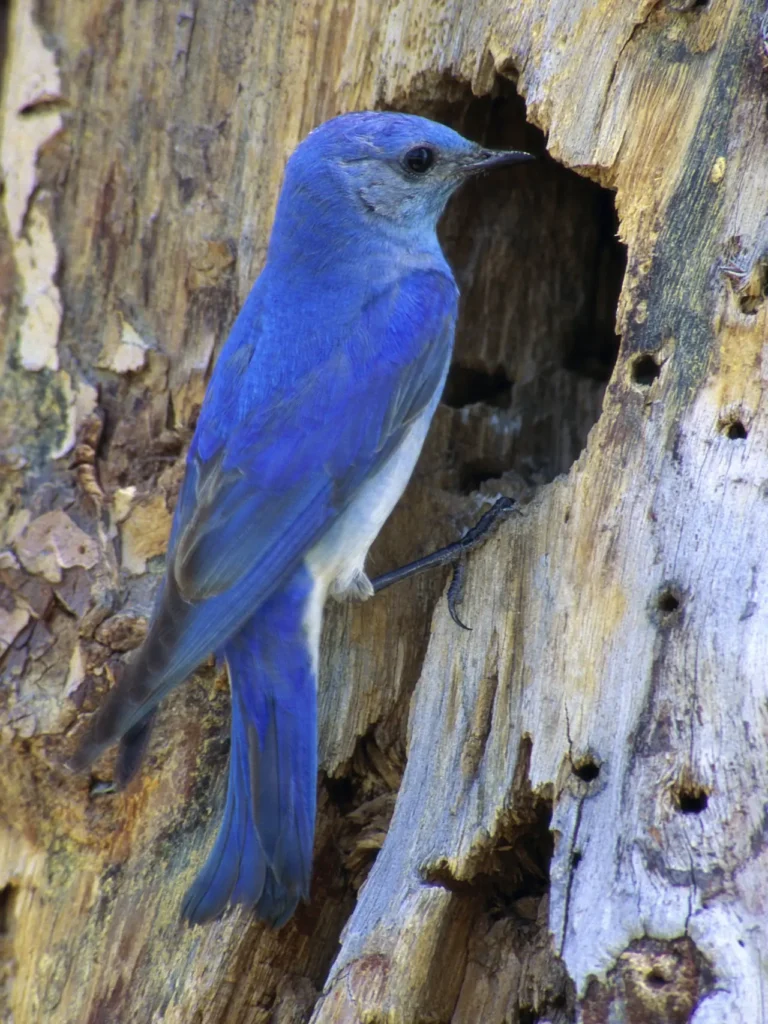
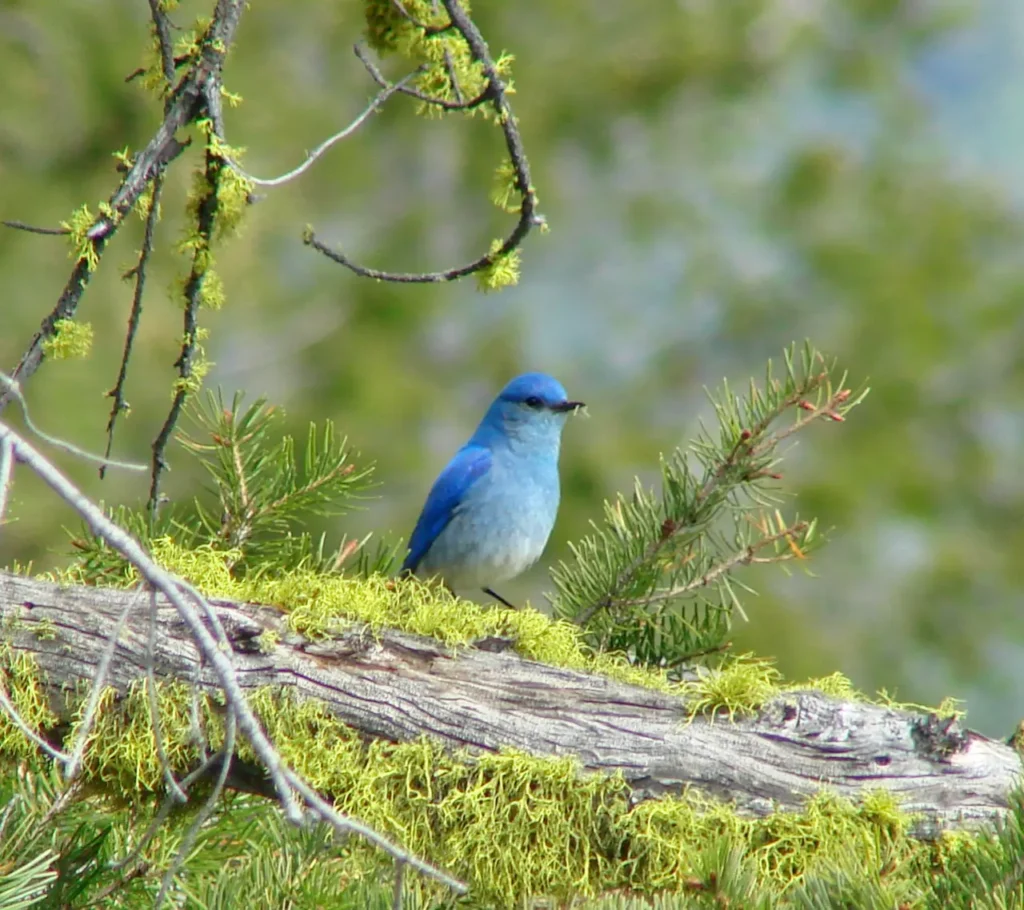
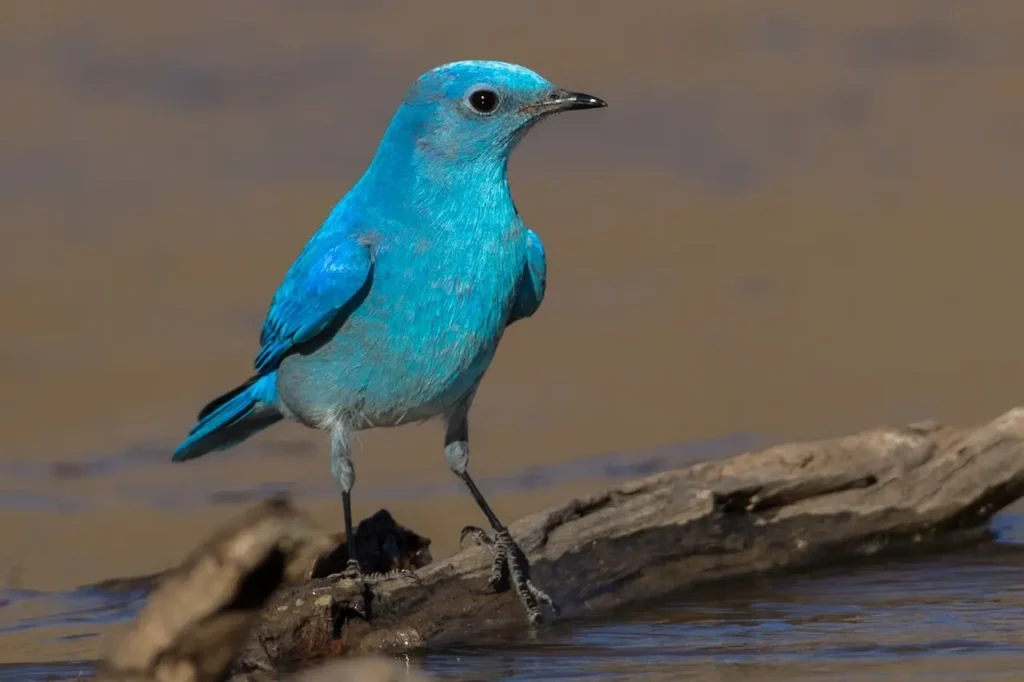
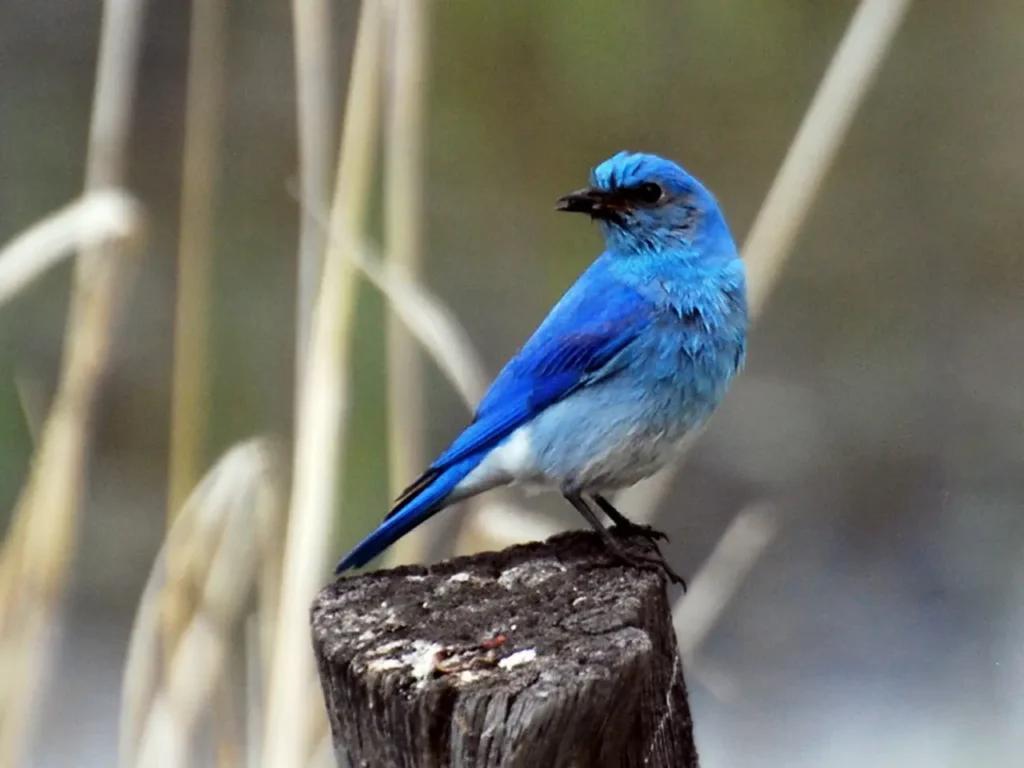
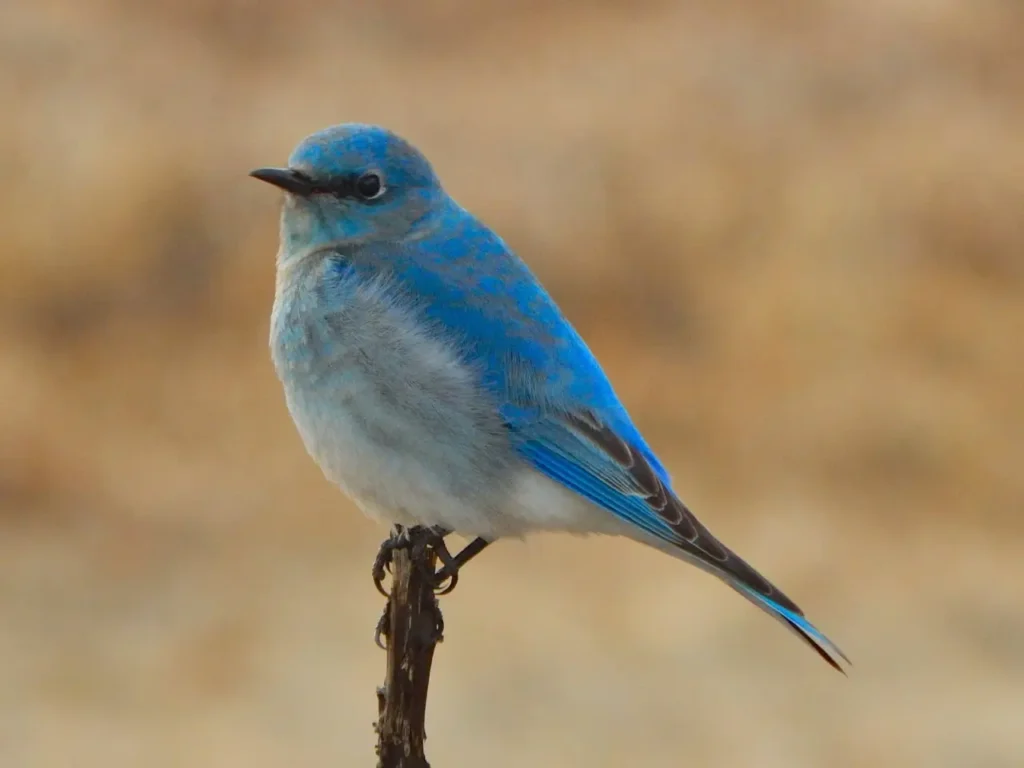
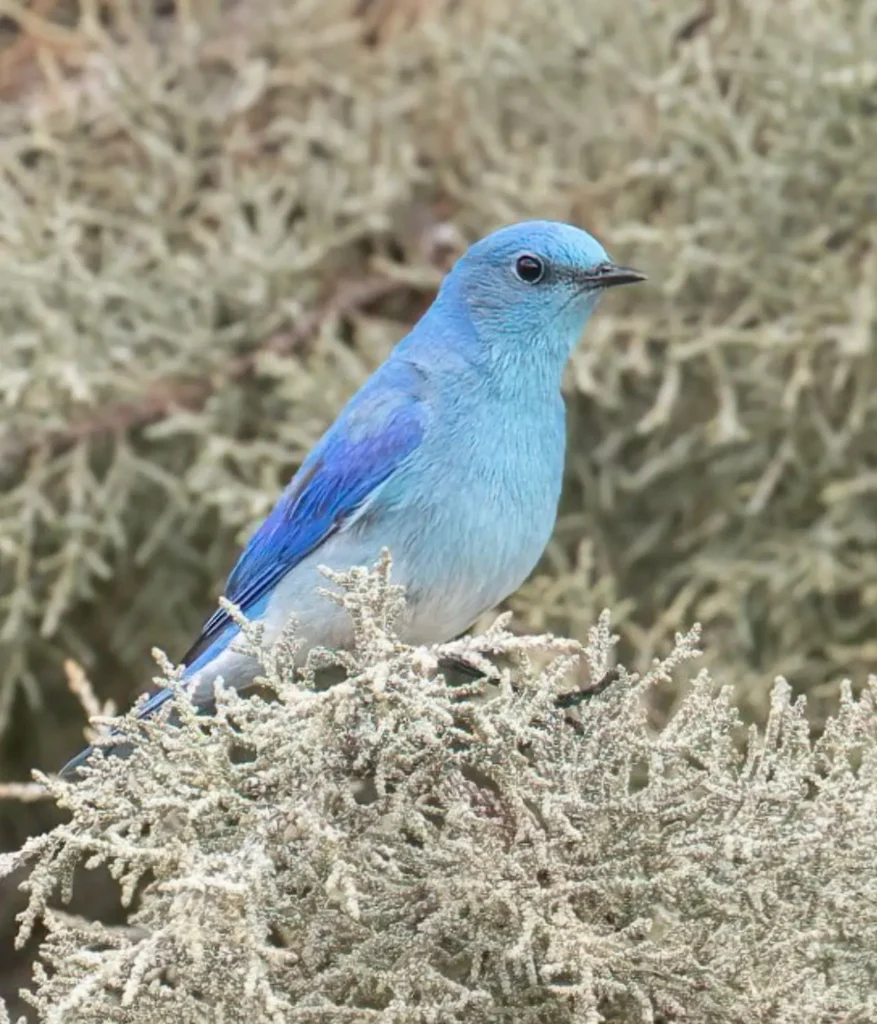
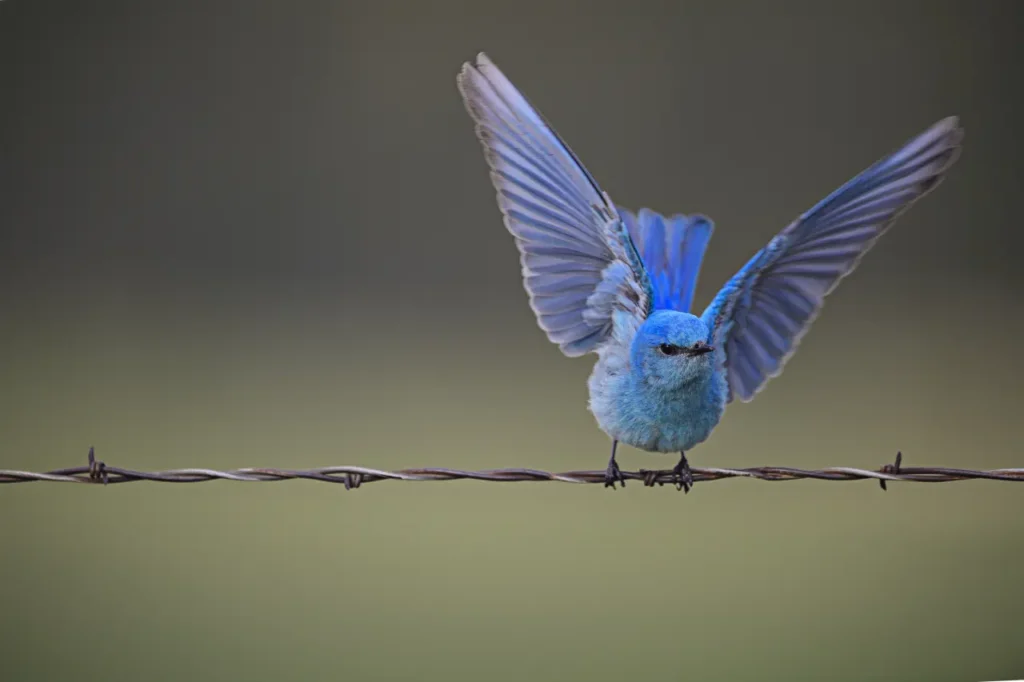
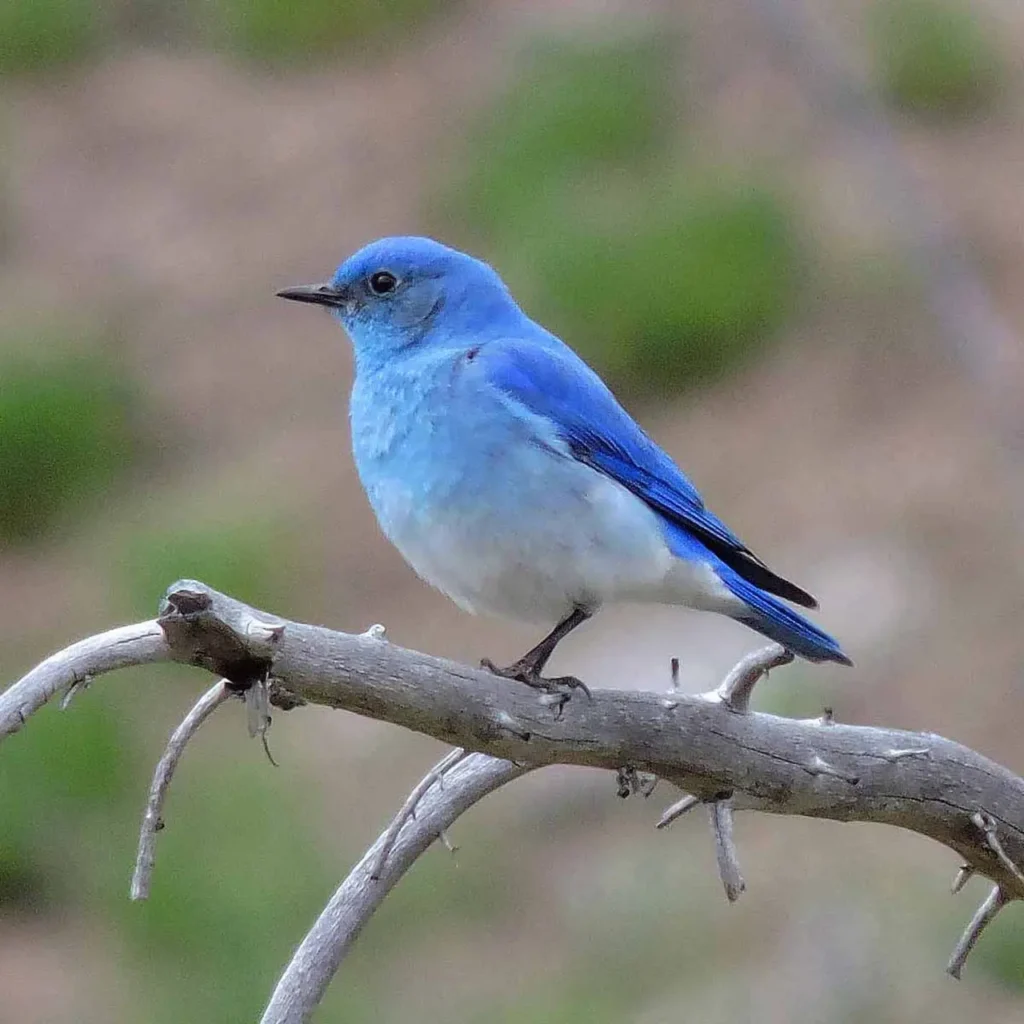
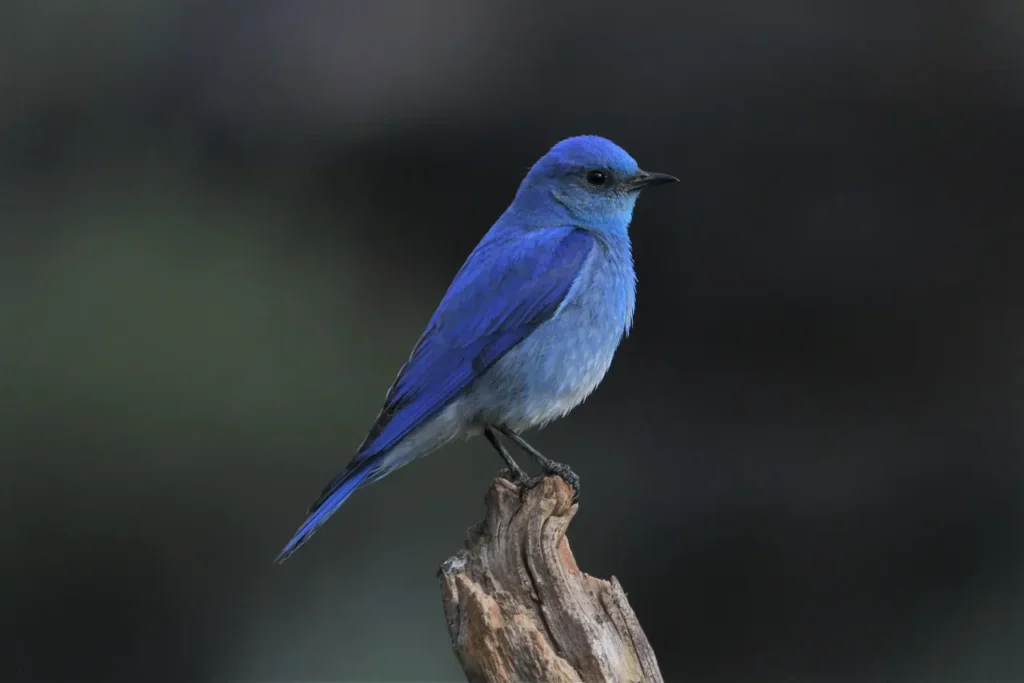
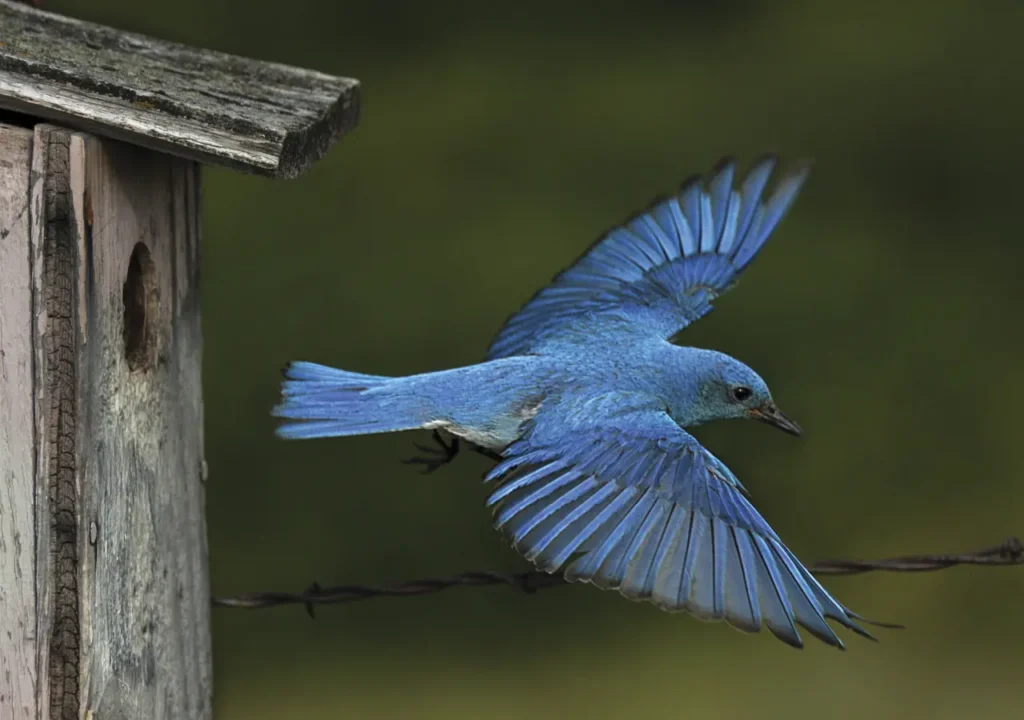
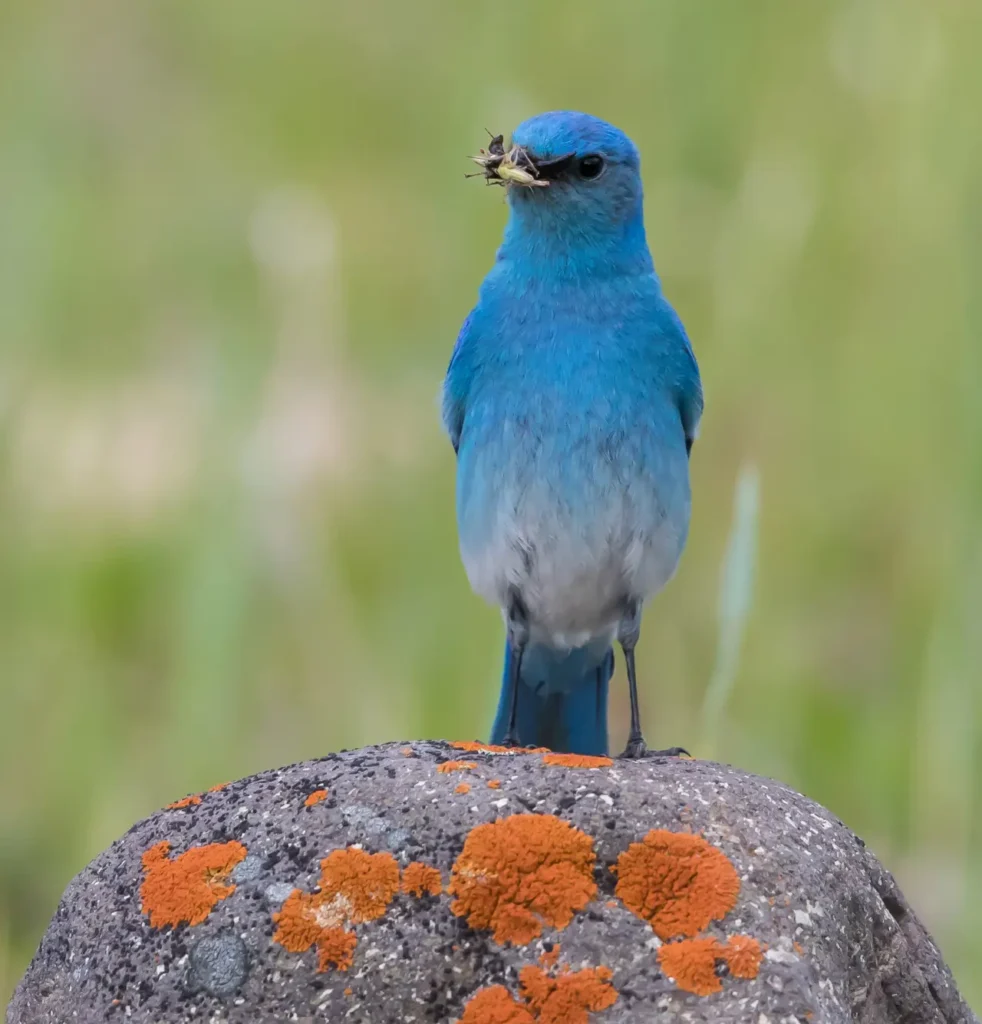
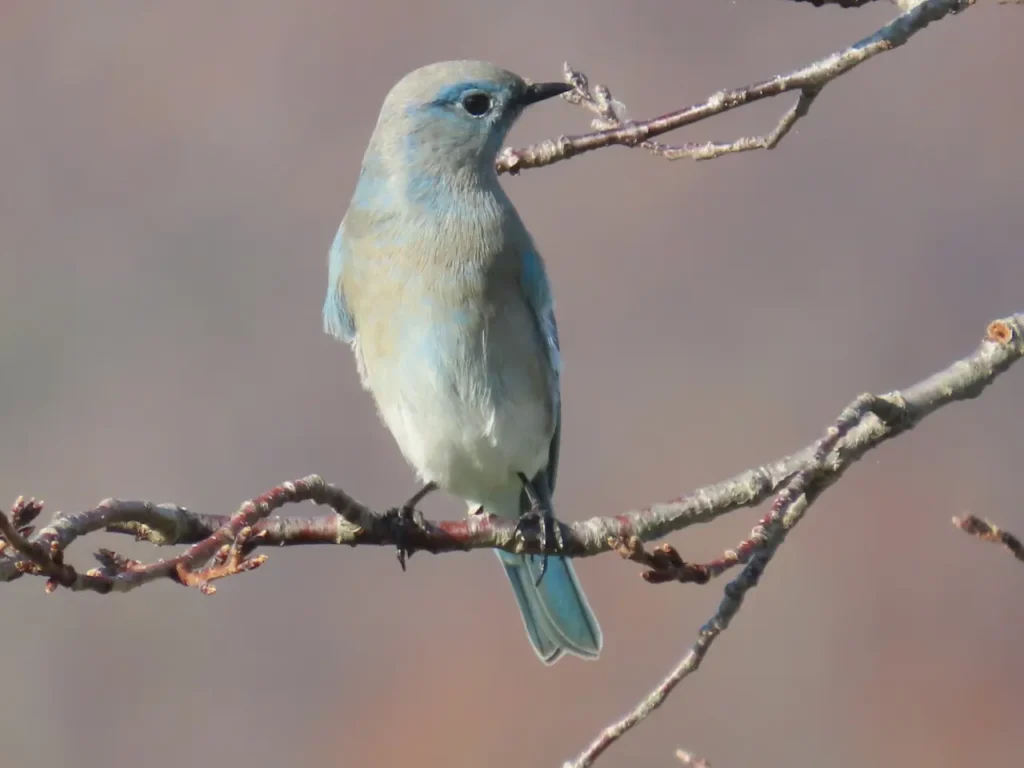
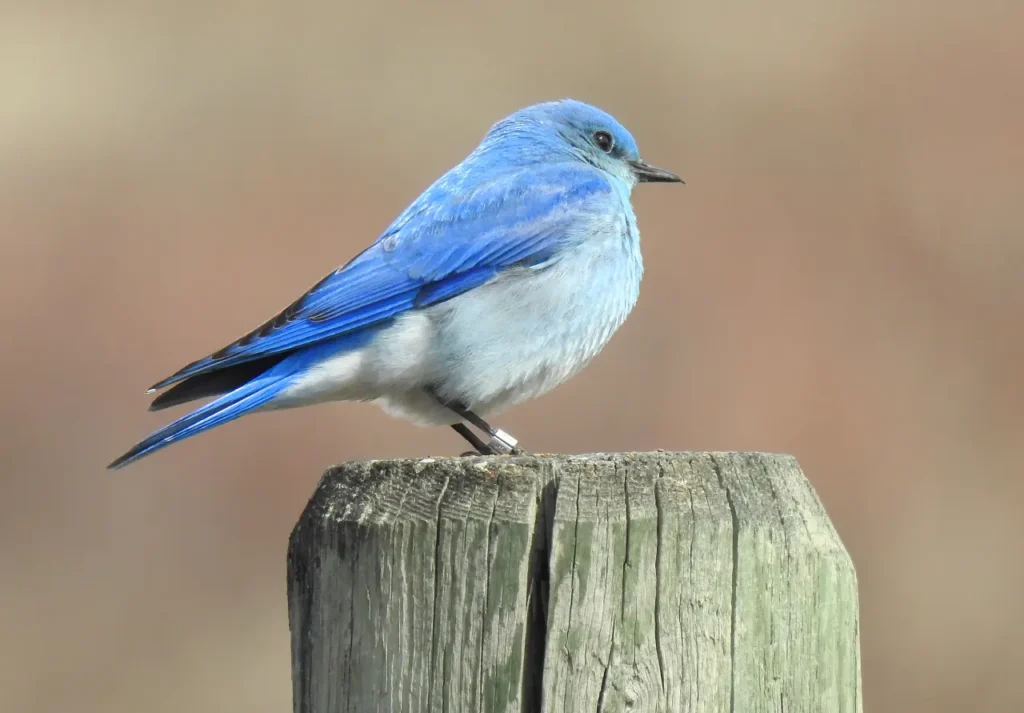
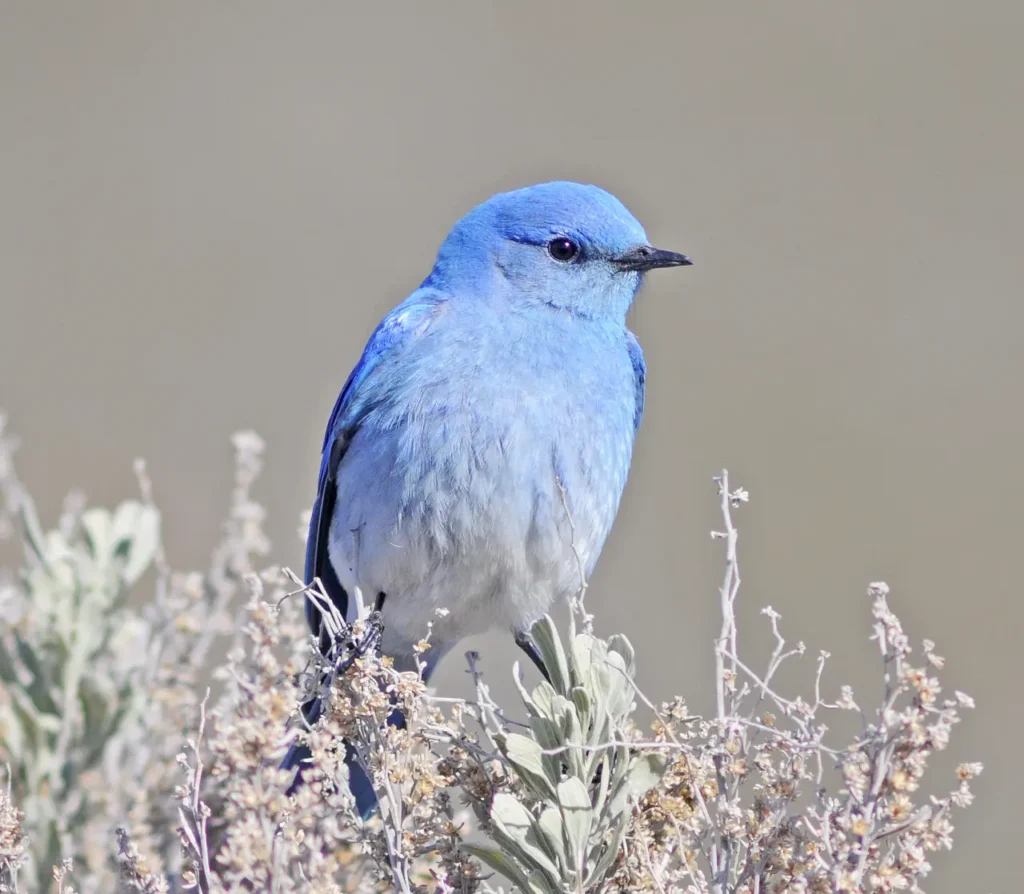
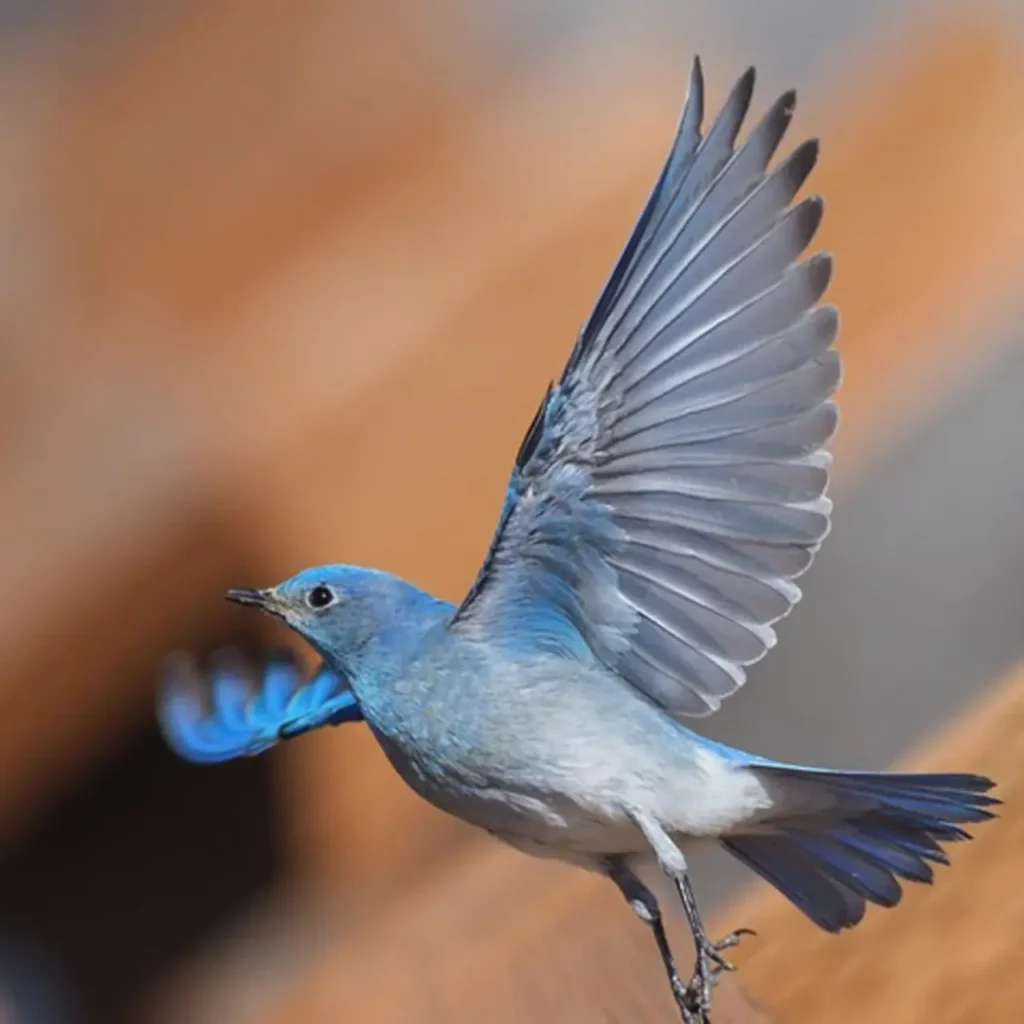
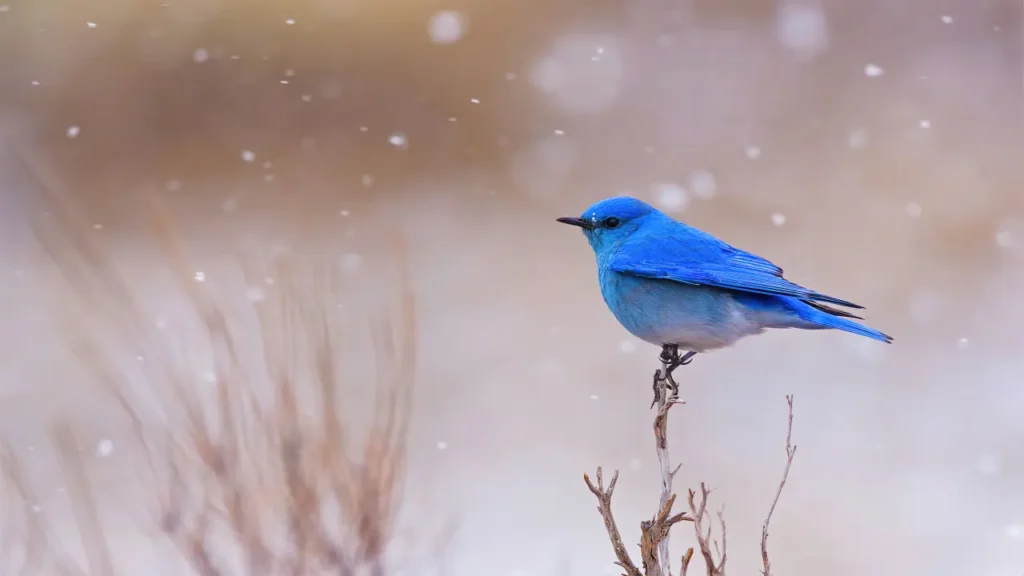
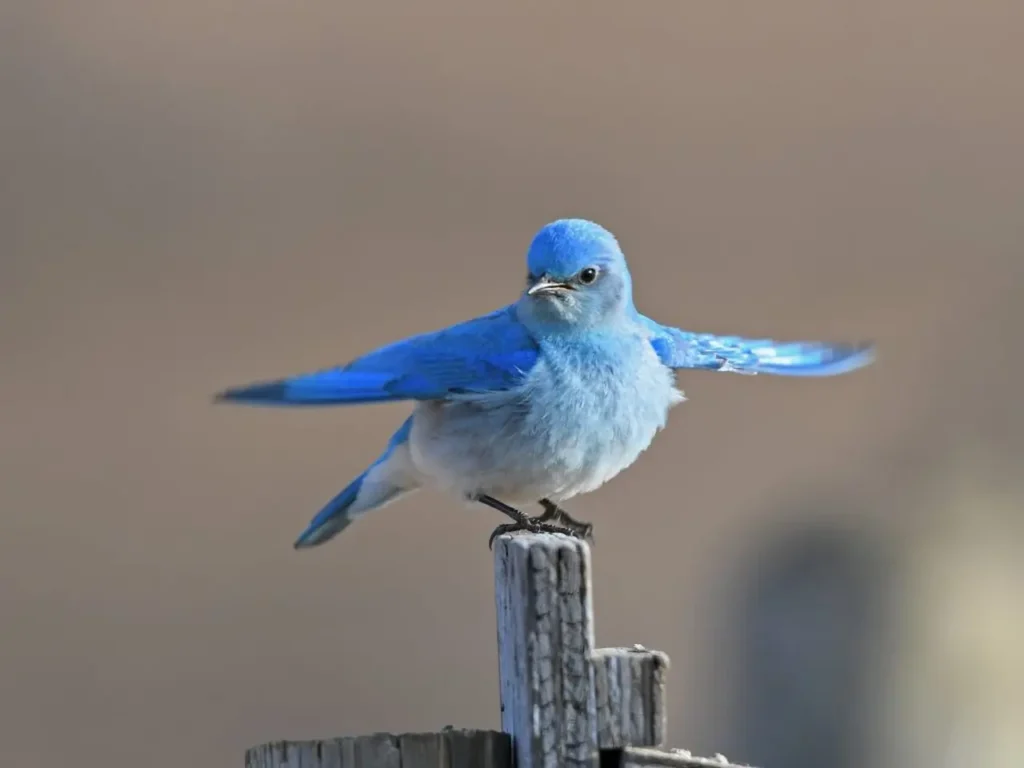
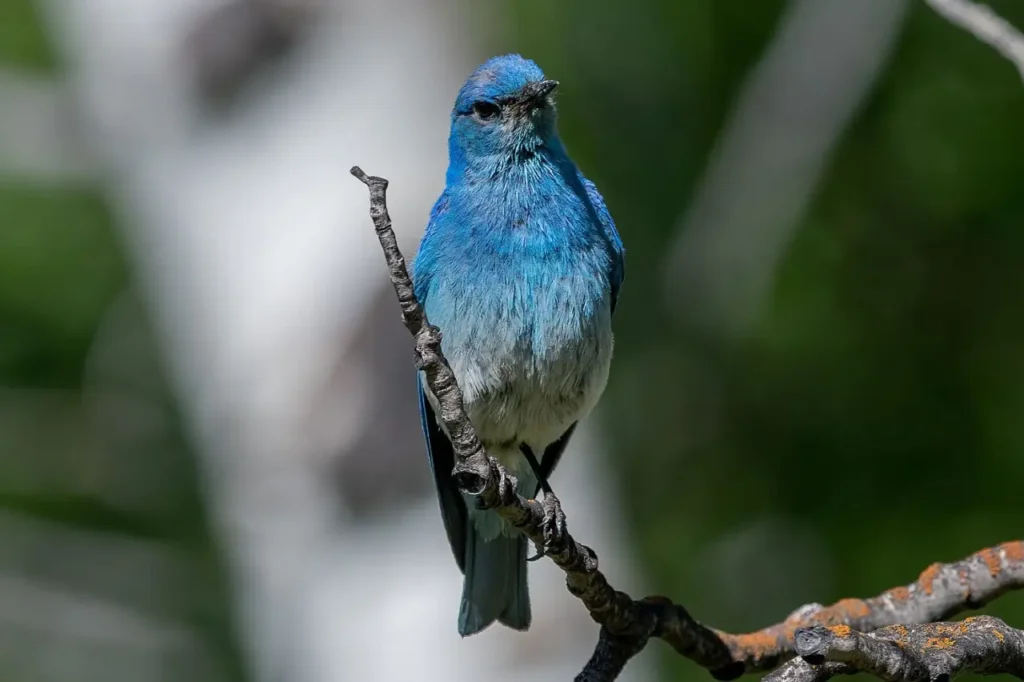
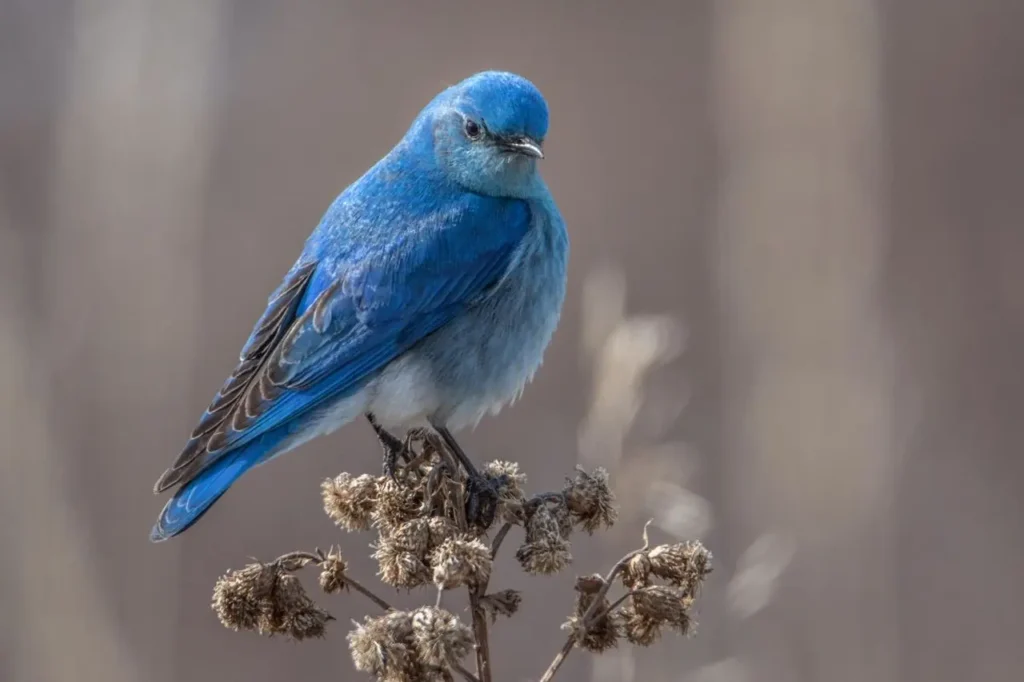
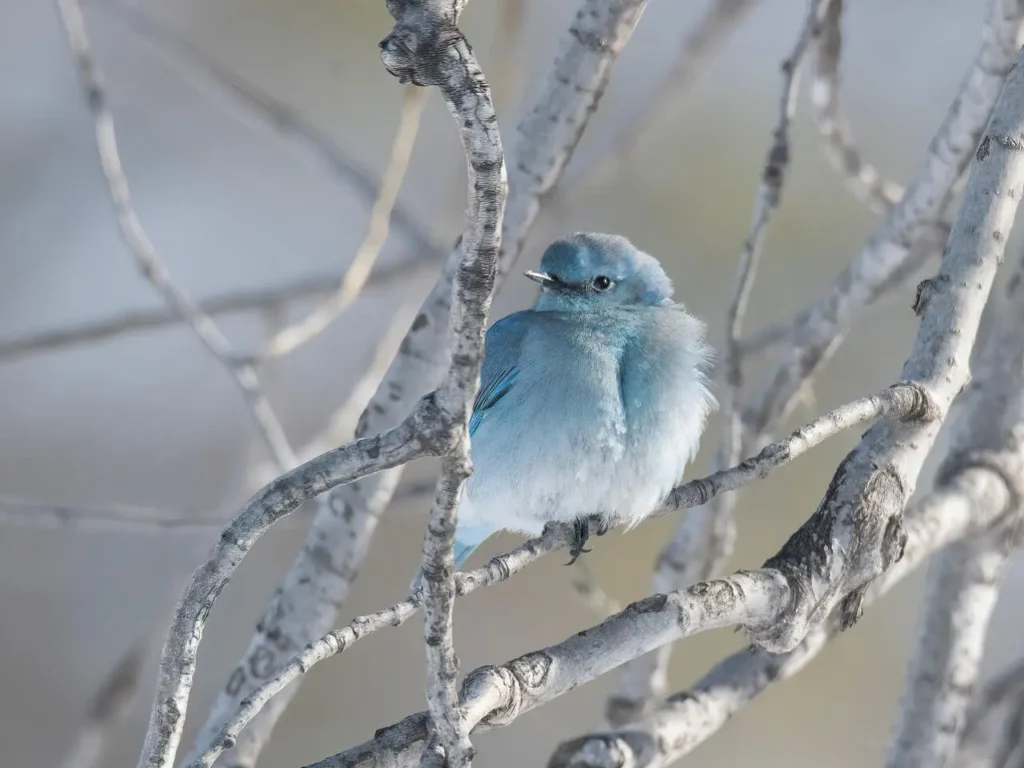
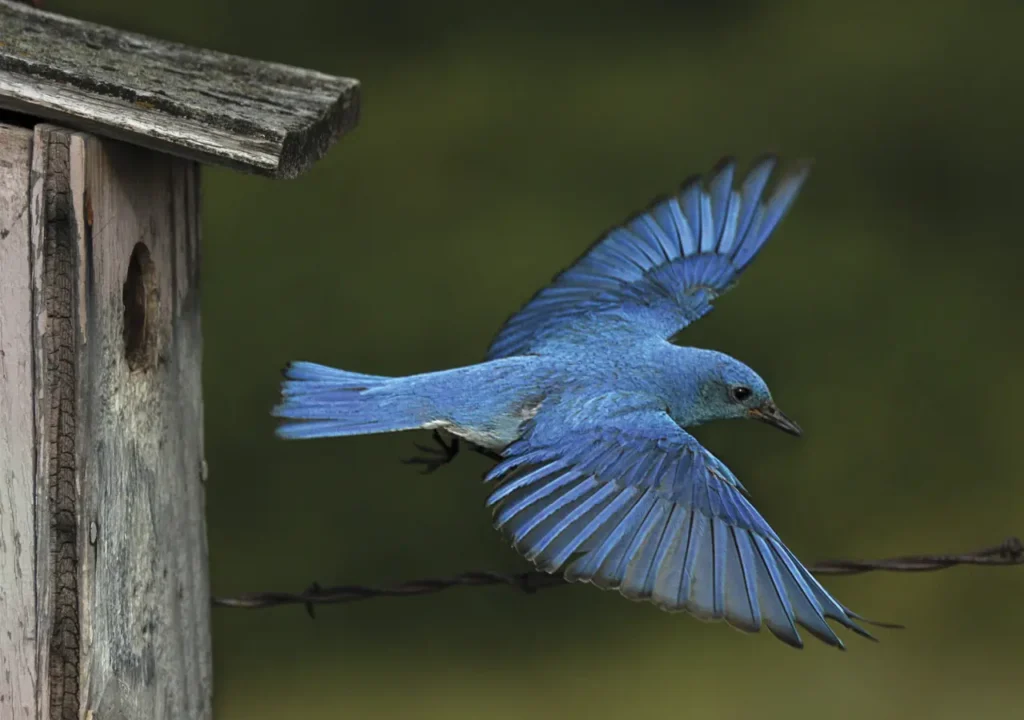
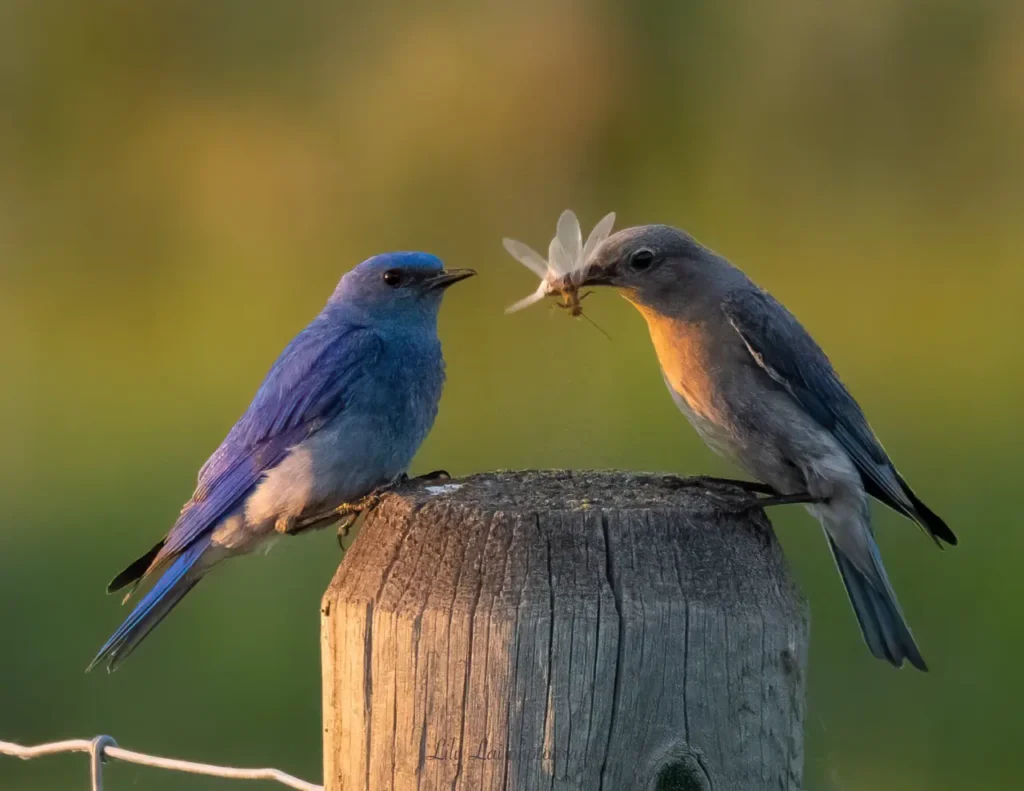

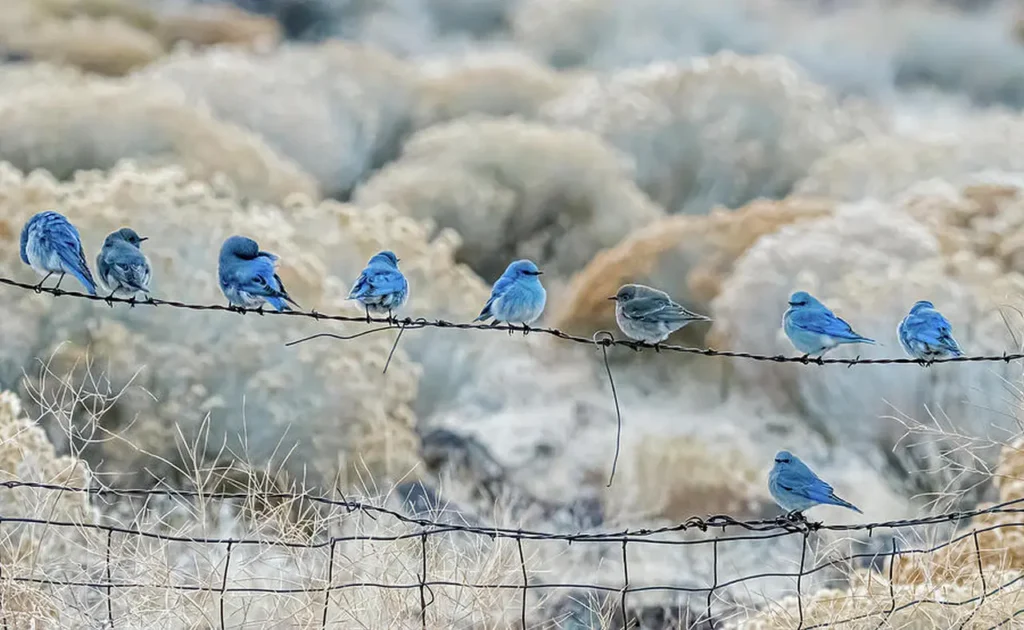
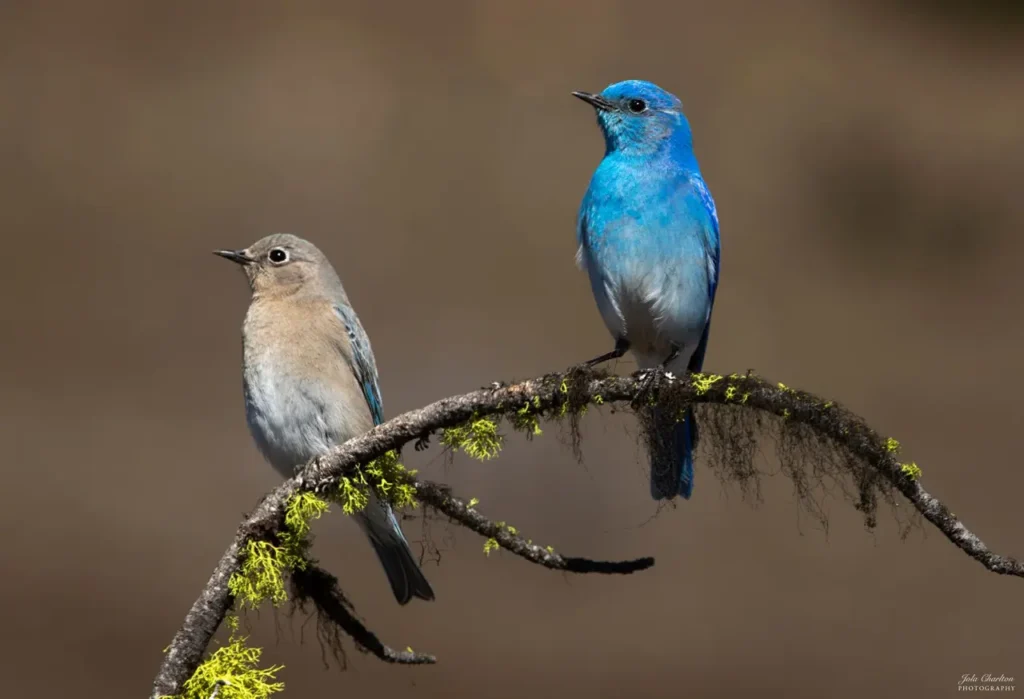
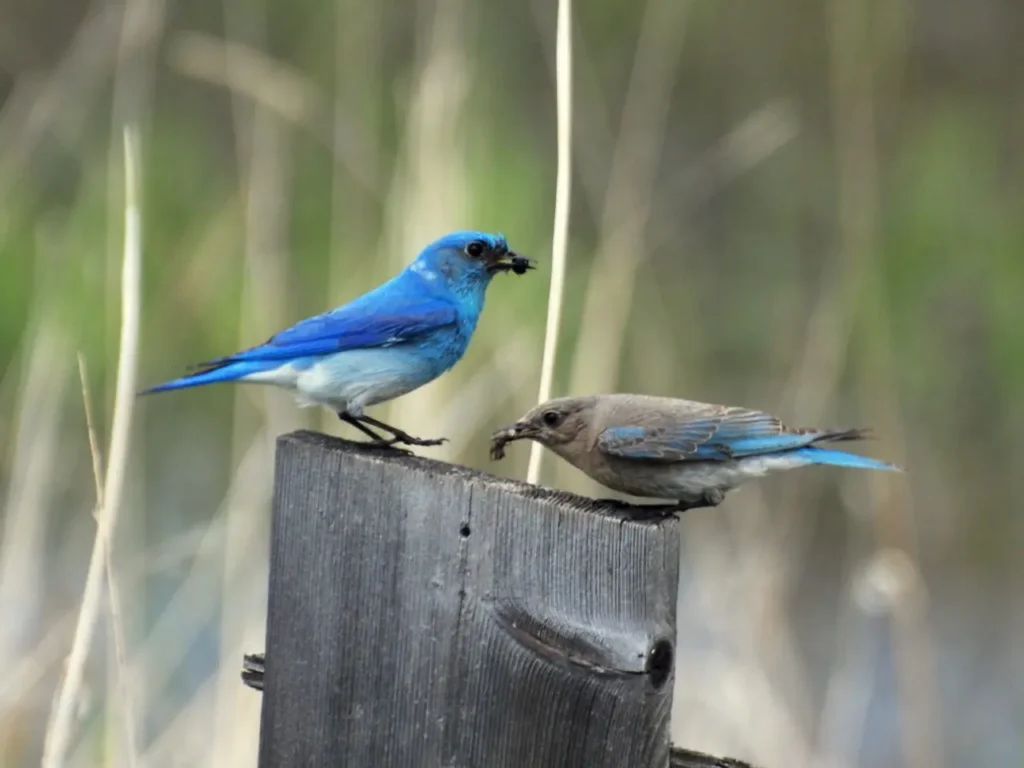
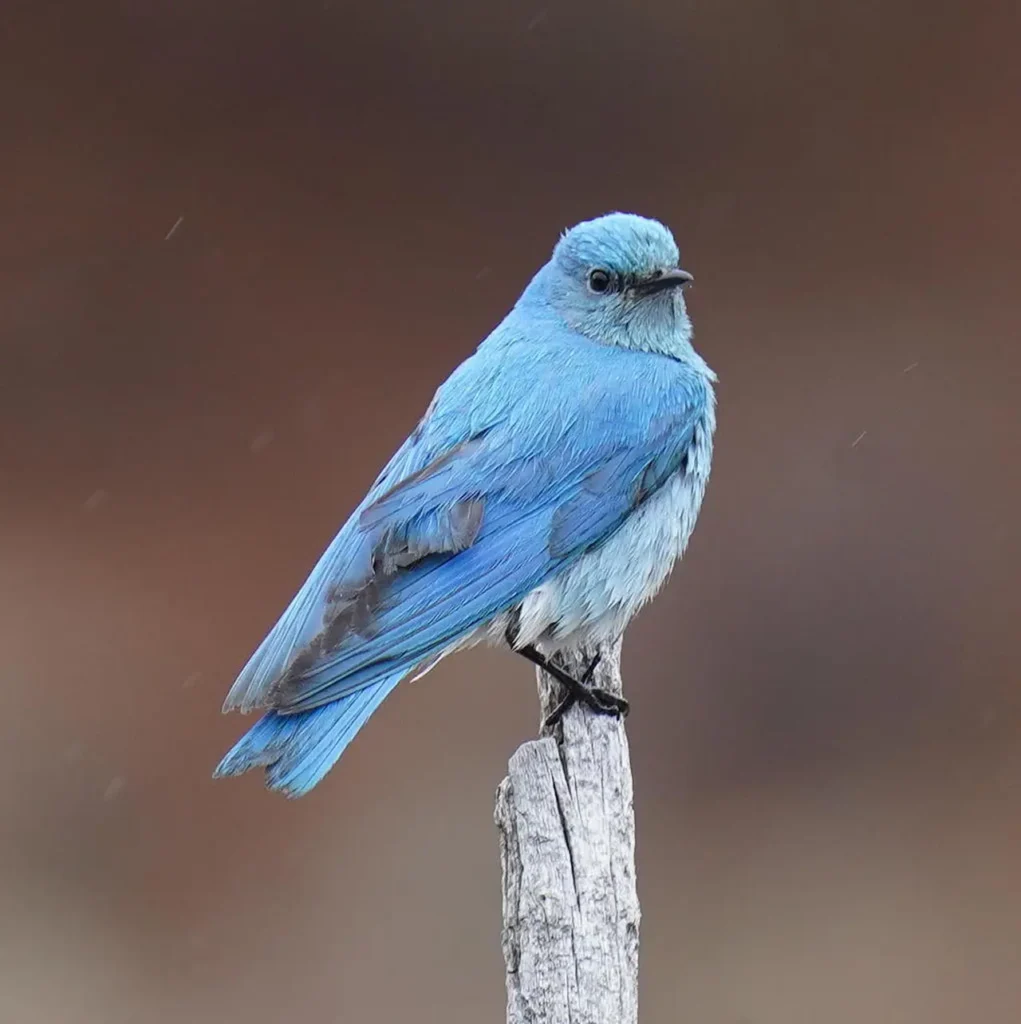
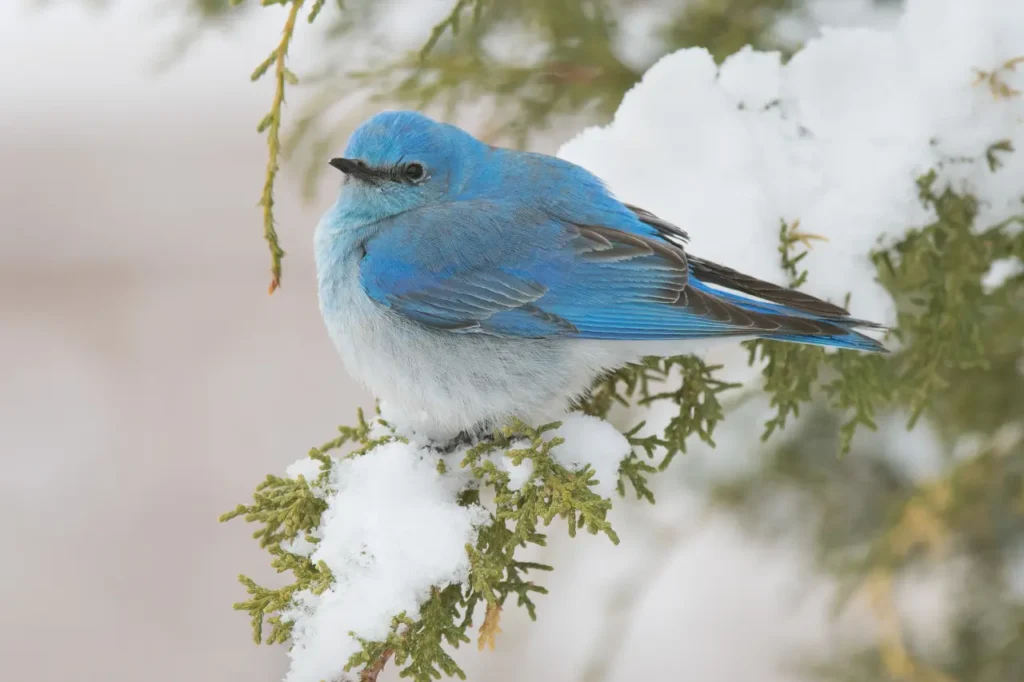
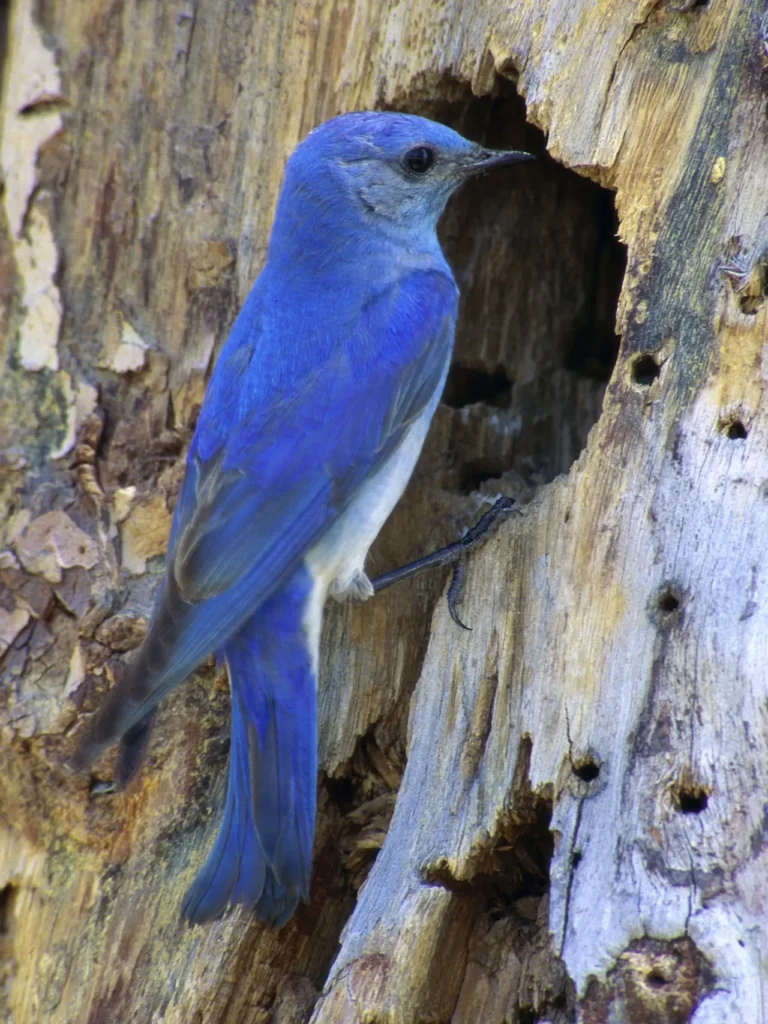
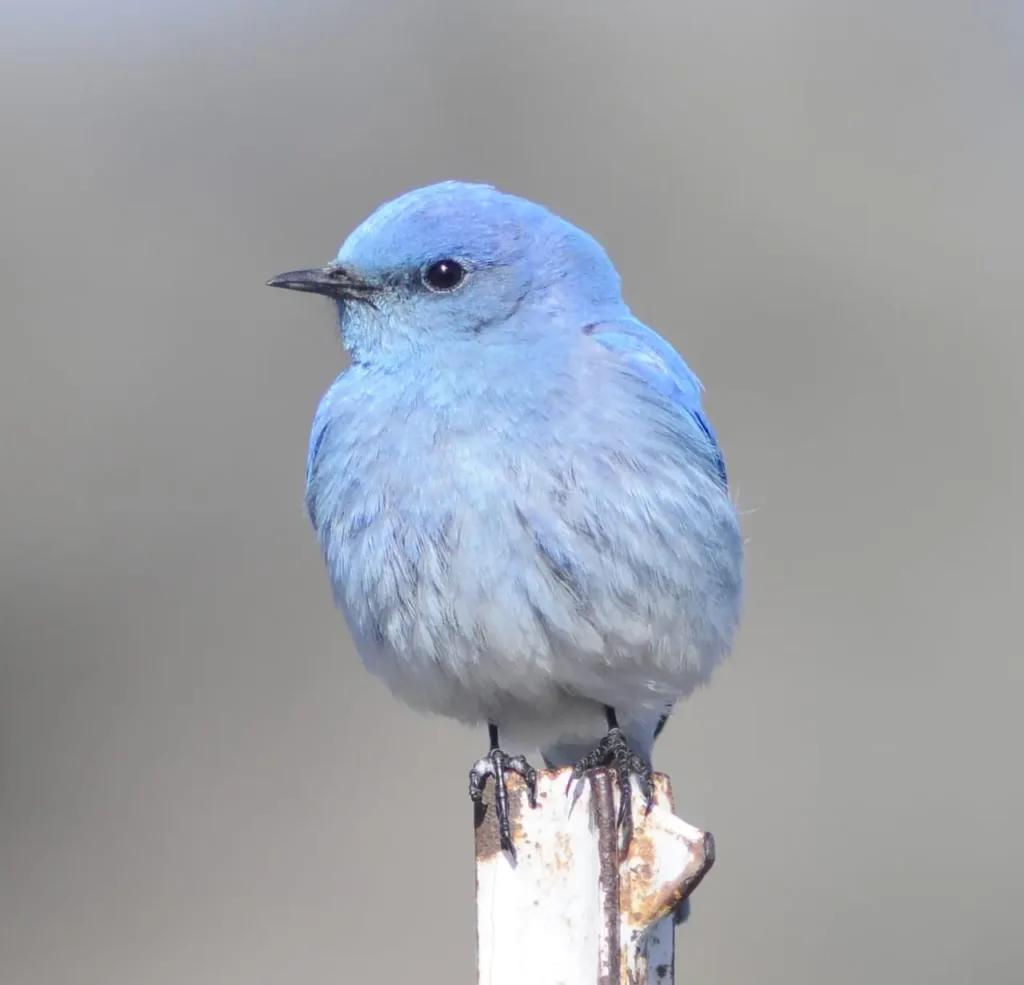
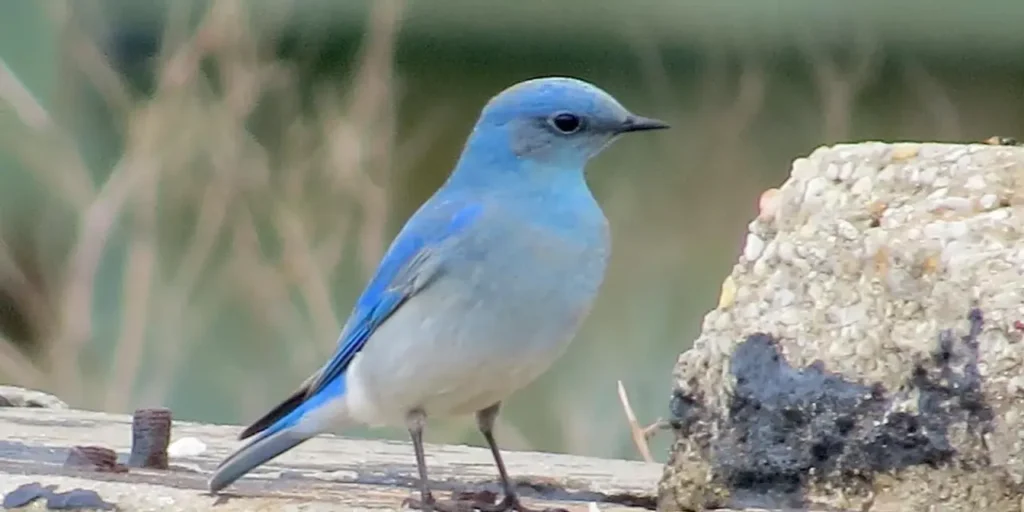
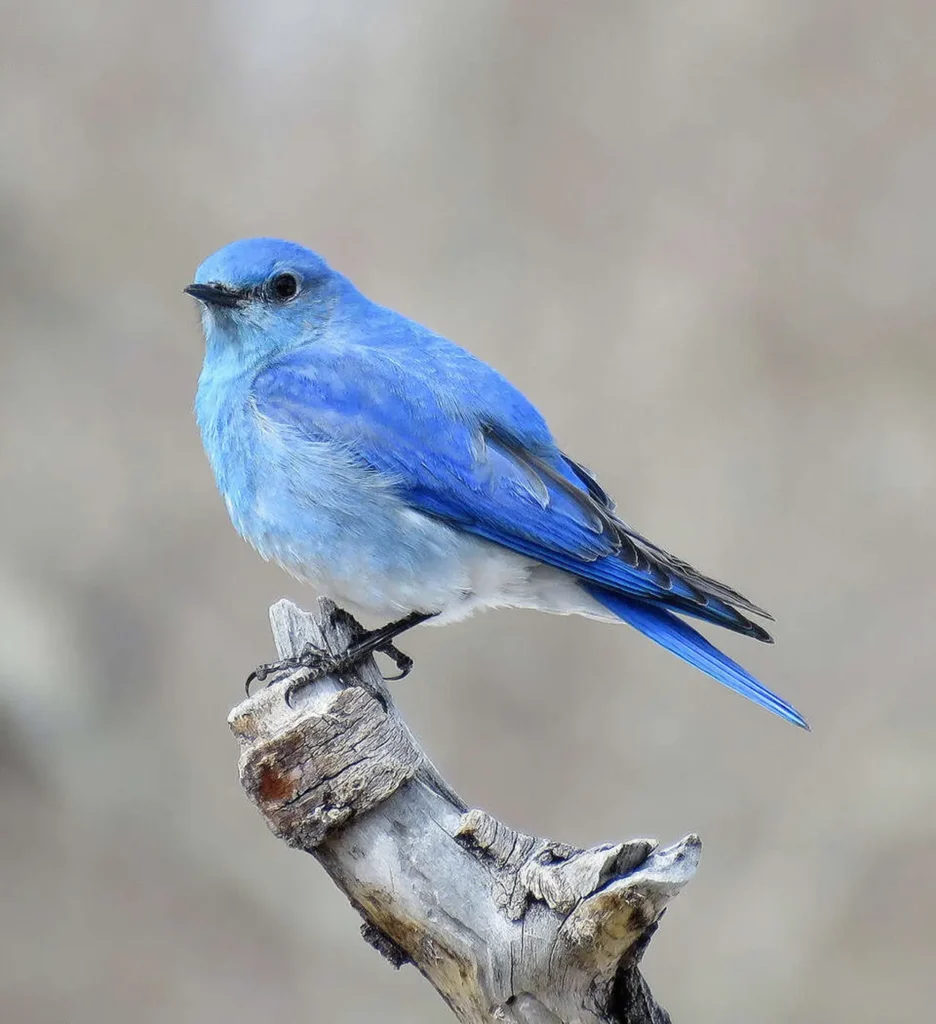
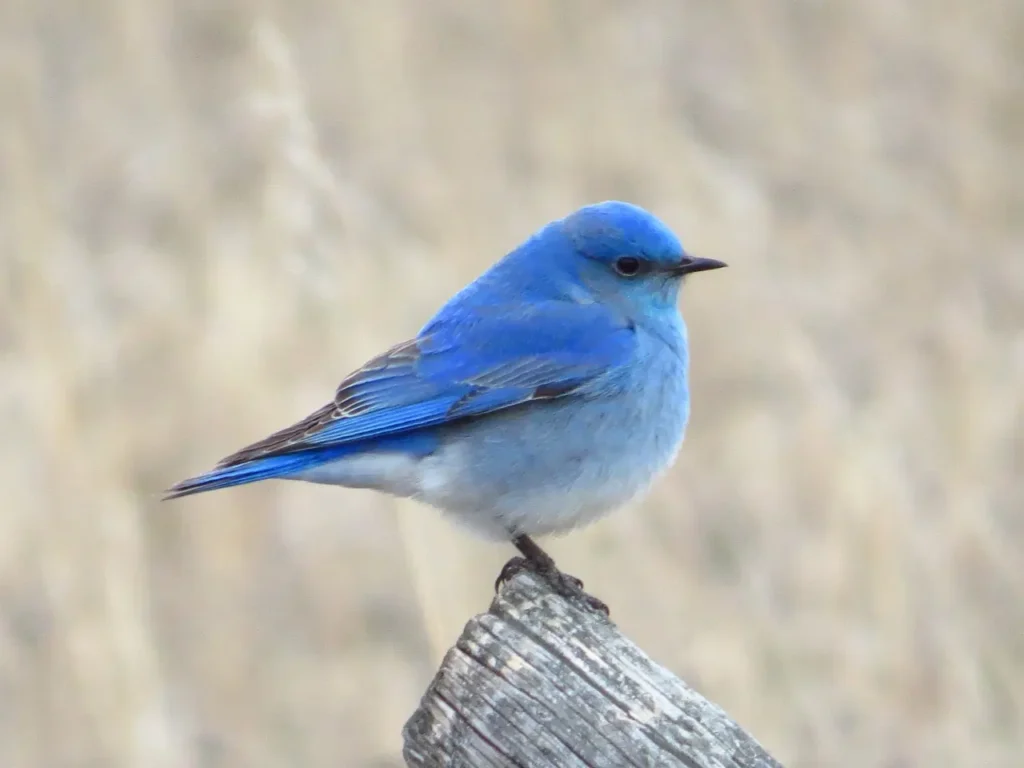
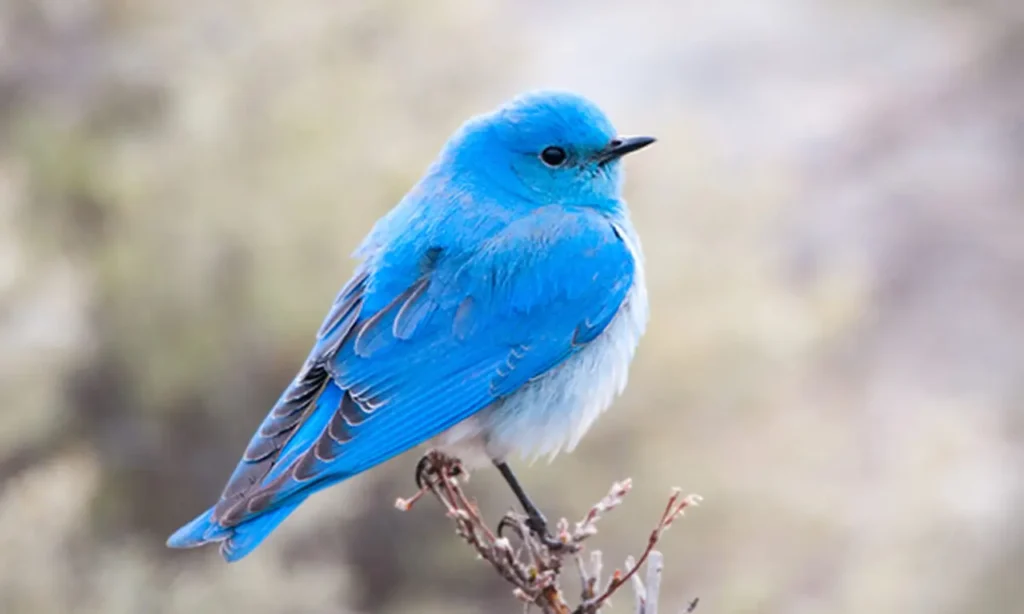
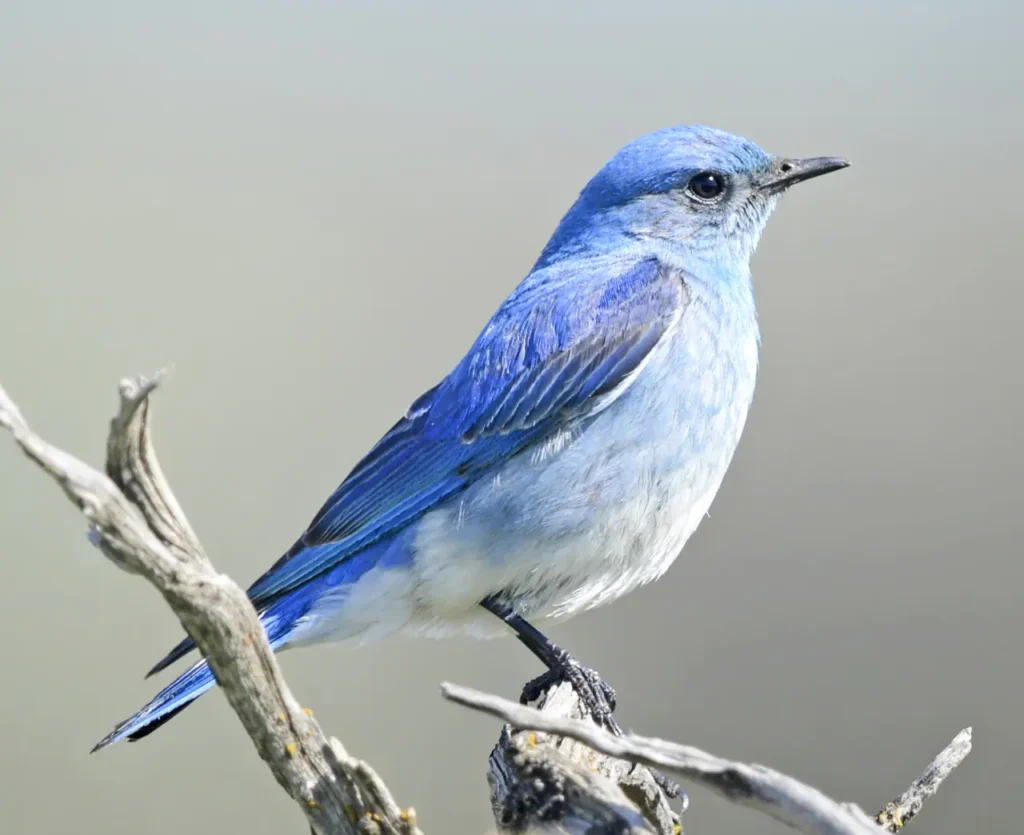
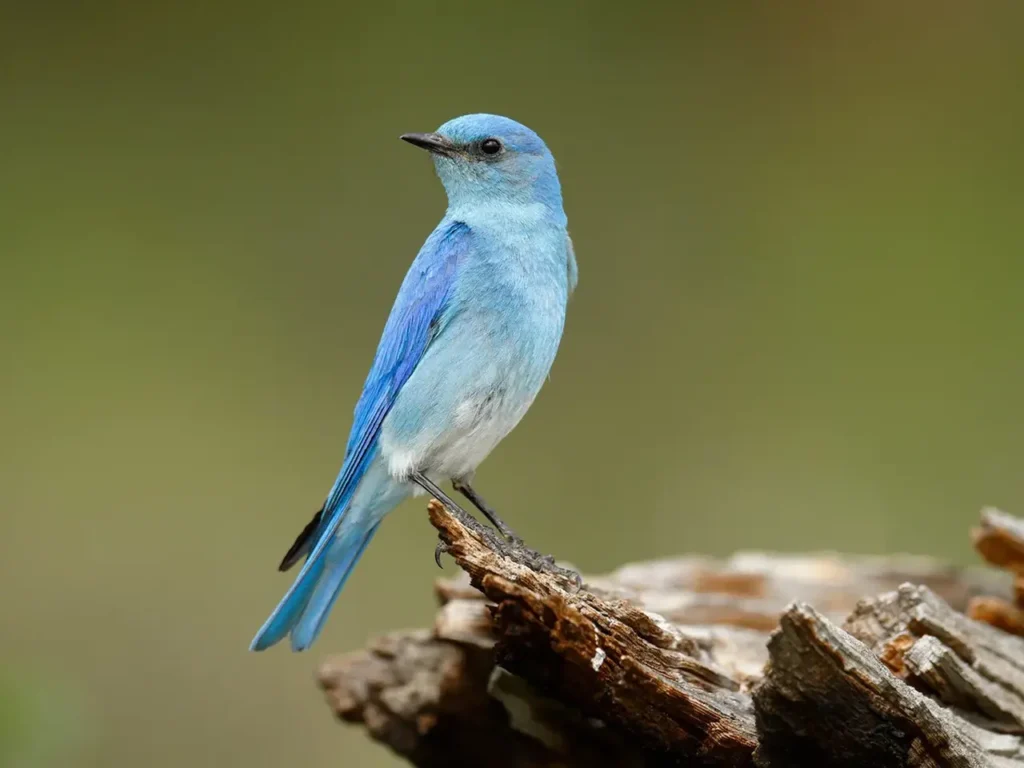
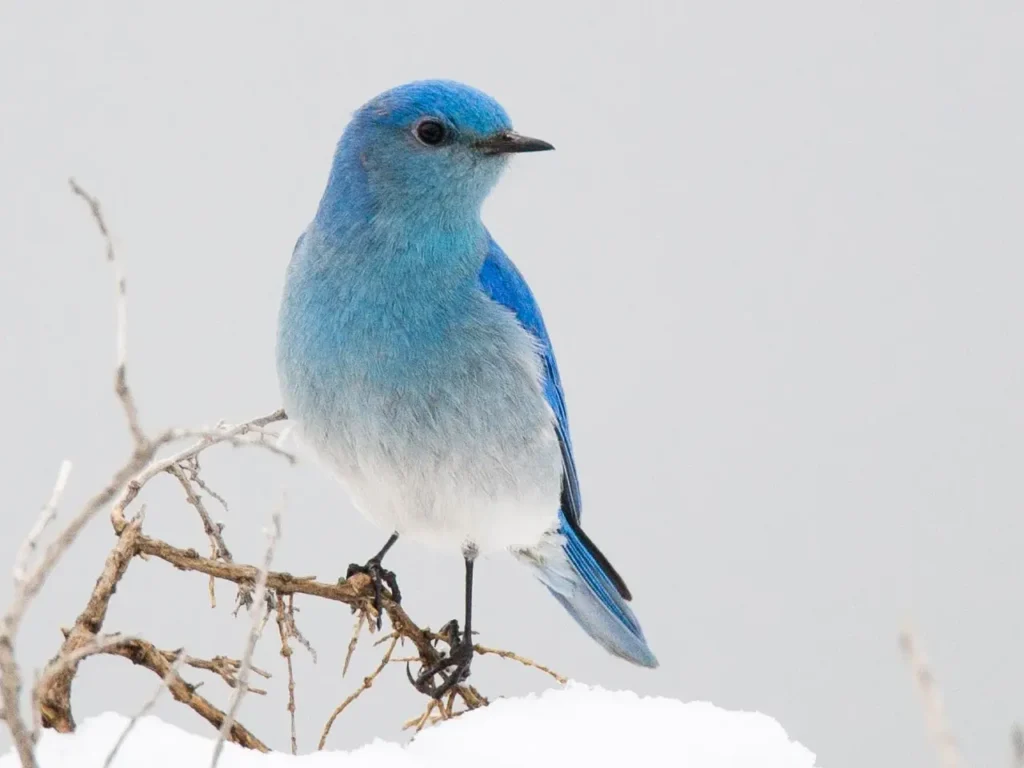
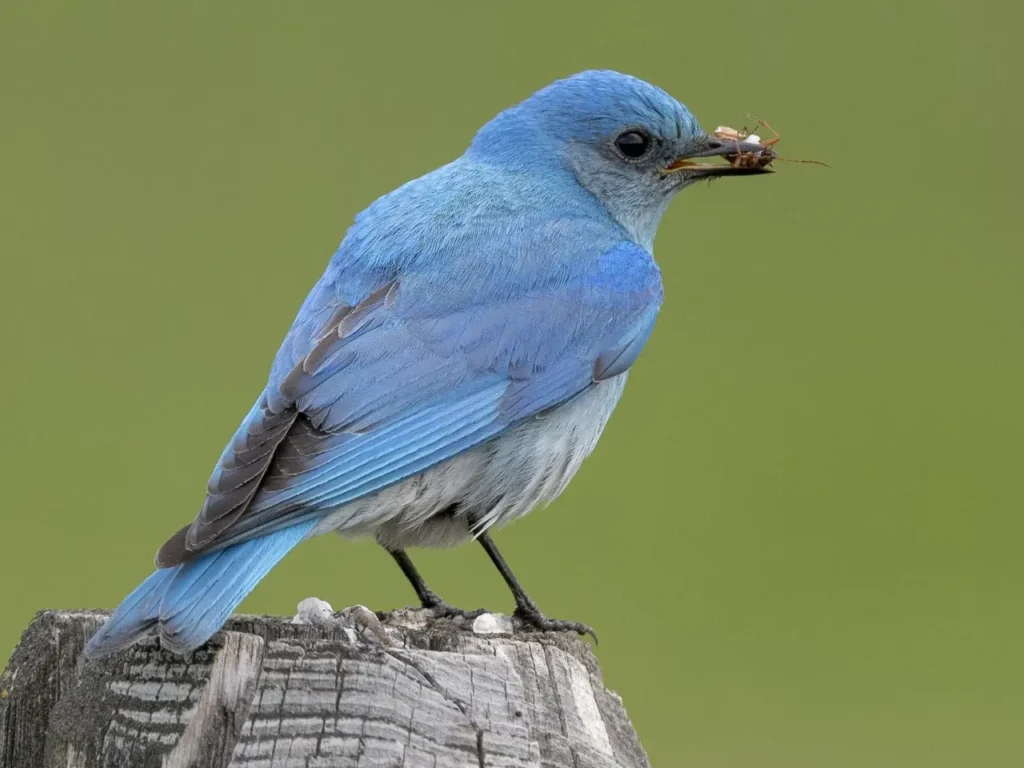
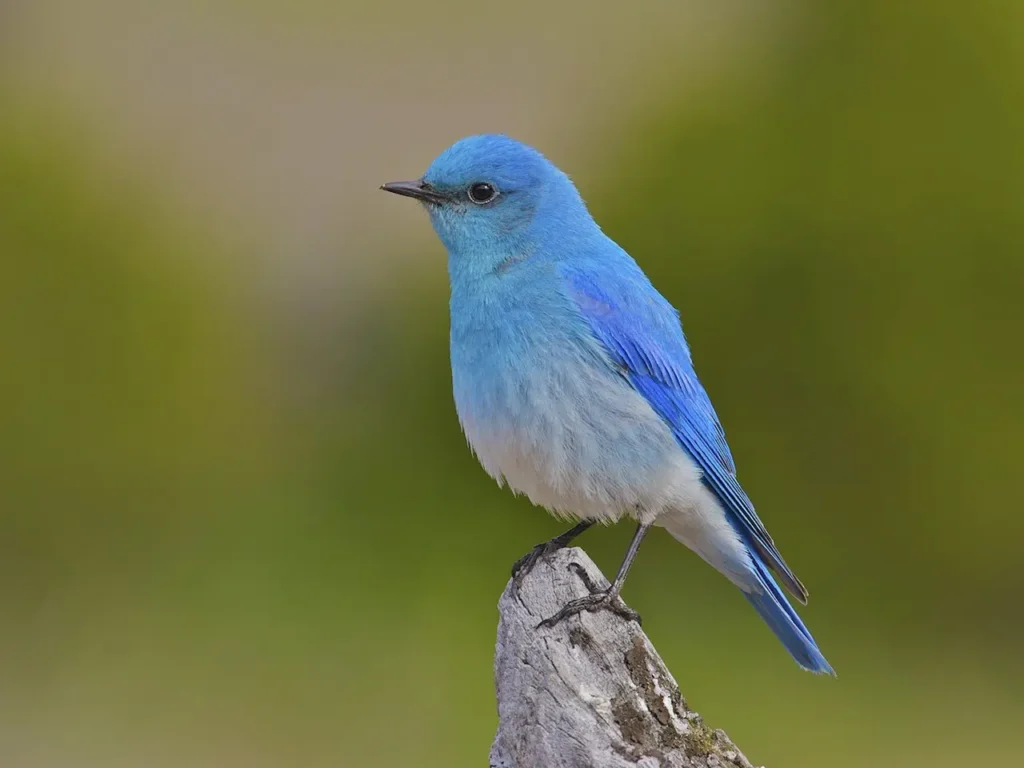
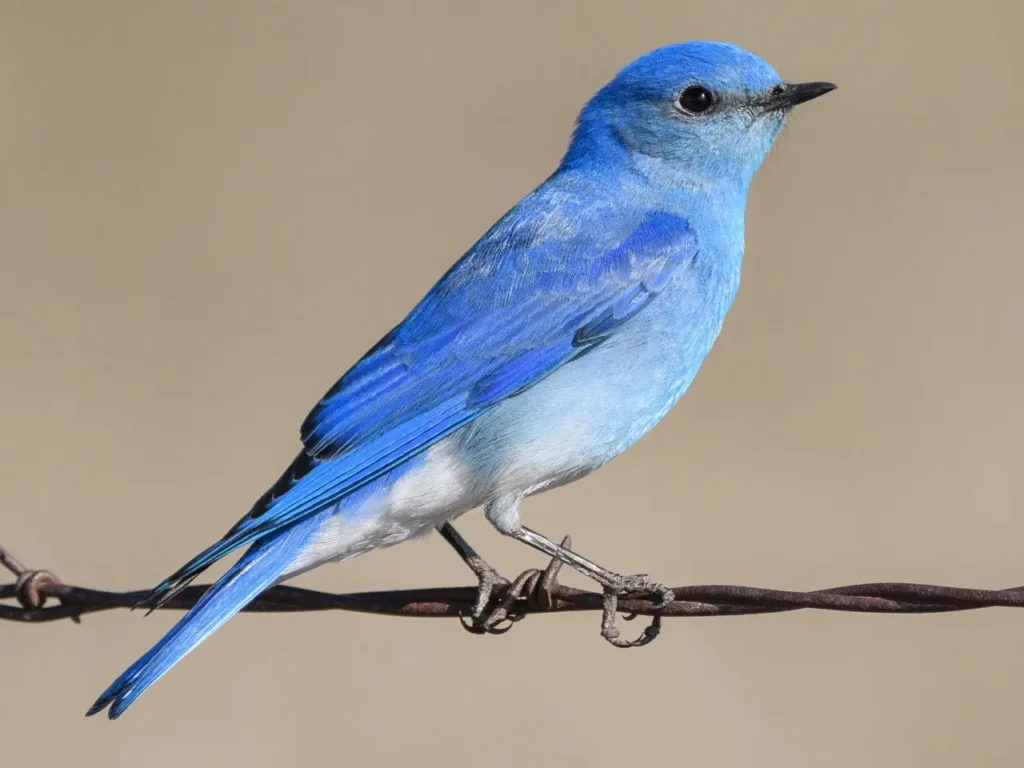

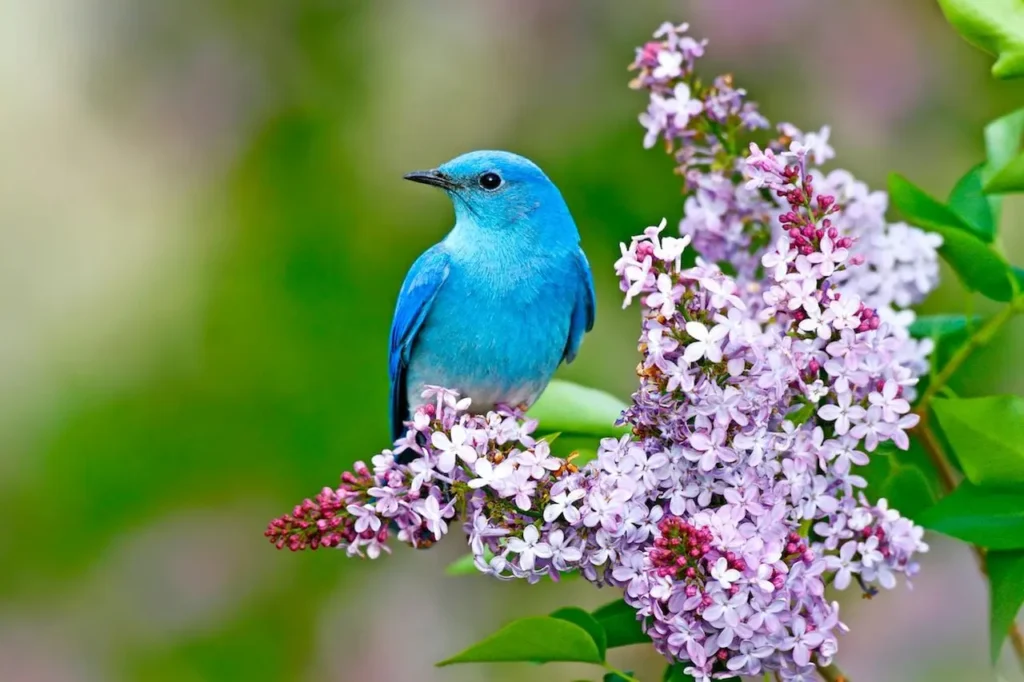
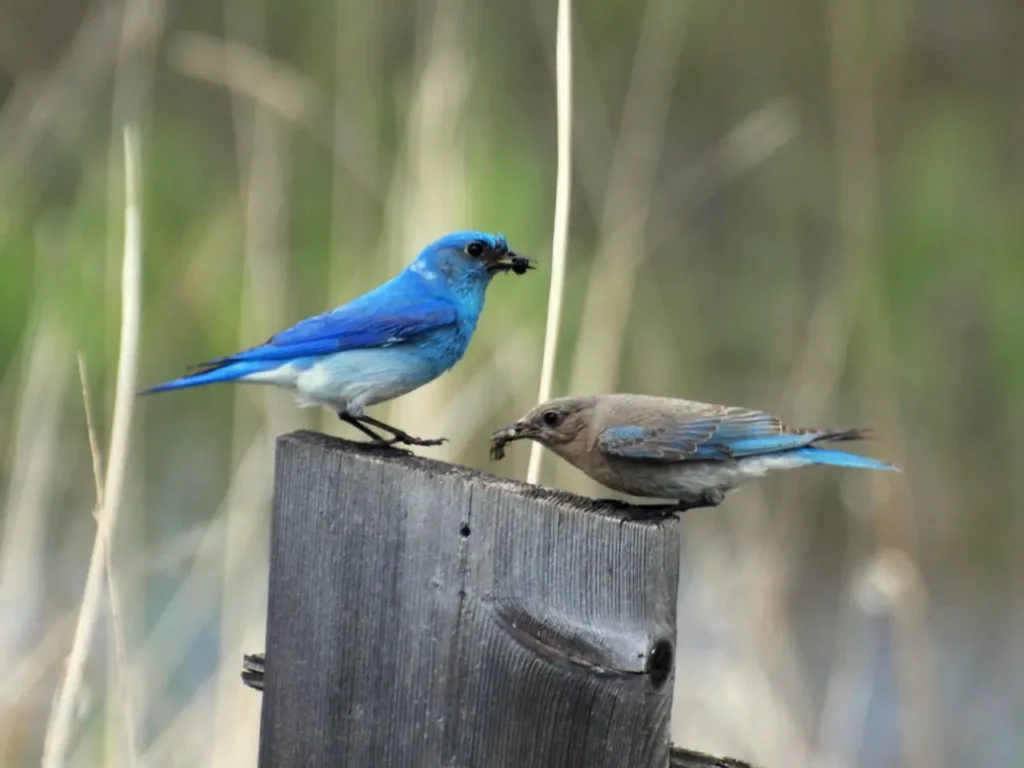
Appearance and Range
The mountain bluebird, often referred to as a “feathered sapphire,” is a small to medium-sized thrush with distinctively blue plumage. The male exhibits vibrant azure-blue feathers on its upper body, while its underparts boast a pale, powder blue shade. Its delicate beak and eyes are dark, contrasting beautifully with its plumage. Female mountain bluebirds, though less vivid, exhibit similar hues, albeit slightly duller.
This species is native to North America, with its range spanning from Alaska and western Canada down to the western United States and parts of Mexico. It frequents open grasslands, sagebrush plains, and mountain meadows, preferring areas with scattered trees and perches from which to survey its surroundings.
Behavior and Ecology
Mountain bluebirds are renowned for their gentle and peaceful nature. Males often engage in aerial displays during the breeding season, showcasing their vibrant plumage while performing fluttering flights, displaying their beautiful wingspan. They also produce melodious songs, which consist of a series of soft, warbling notes that fill the air with a sense of tranquility.
These insectivorous birds feed on a diverse diet, including insects, spiders, and occasionally berries. Their foraging behavior involves hovering near the ground or perching on elevated spots, from which they can detect prey movements and swiftly dive down to capture their next meal.
Breeding and Nesting
Mountain bluebirds typically breed in open habitats, constructing their nests in natural tree cavities or artificial nest boxes. The female plays a significant role in nest building, using materials such as grass, feathers, and soft plant fibers to create a cozy and secure environment for incubating their eggs.
After laying a clutch of four to eight pale blue eggs, the female diligently incubates them for about two weeks, while the male assists by providing food. Once the hatchlings emerge, both parents partake in feeding and caring for their offspring until they fledge and become independent.
Conservation Status and Conservation Efforts
The mountain bluebird population is generally stable, although localized declines have been observed in some areas due to habitat loss, pesticide use, and competition for nest sites with other cavity-nesting species. To support their conservation, individuals and organizations have initiated efforts to install nest boxes and protect their preferred habitats. Land management practices that promote healthy grasslands and open spaces, along with the preservation of nesting sites, are crucial for their continued well-being.
Symbolism and Cultural Significance
The mountain bluebird holds a special place in the hearts of many, serving as a symbol of hope, resilience, and wilderness. Its brilliant blue plumage, reminiscent of clear skies and vast landscapes, has made it an emblem of natural beauty. It is often associated with the arrival of spring and is celebrated as a harbinger of joy and new beginnings.
Furthermore, the mountain bluebird has been adopted as the state bird in both Idaho and Nevada, further highlighting its cultural significance and connection to the local communities.
The mountain bluebird is a cherished and cherished icon of the North American landscape, captivating observers with its radiant blue plumage and melodious songs. Its presence serves as a reminder of the delicate balance of ecosystems and the importance of preserving open spaces and healthy habitats. By appreciating and protecting these vibrant creatures, we not only safeguard their future but also ensure the preservation of the natural wonders that continue to inspire and uplift us.
